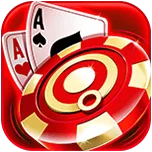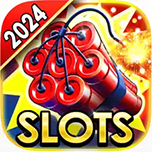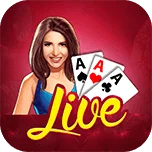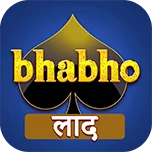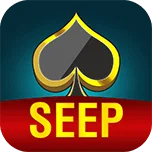 Learn Teen Patti
Learn Teen Patti
- Teen Patti
- 6 Patti
- 3-2-1 Tournament Mode
- Private Table
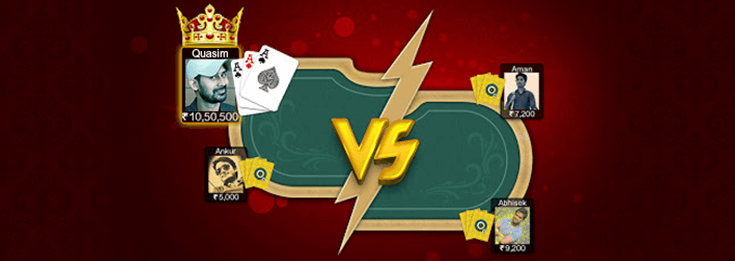
Teen Patti
Teen Patti is a popular Indian gambling card game just like poker. It is normally played in a group of 3 to 6 persons and uses a 52-card pack without jokers. Each player is dealt three cards face down. Before the cards are dealt, the boot amount is decided and collected from each player. The boot amount is the minimum stake amount put in the pot, which is the money kept in the centre of the table. As the game progresses the pot money grows and is won by the winner of that hand. Winner is the player who remains in the game till the completion of the hand and has the best hand or the highest hand based on the cards ranking shown below.
Ranking of the cards from high to low is:
- Trail or Set (three of same rank),
- Pure sequence,
- Sequence (or run),
- Color,
- Pair (two cards of same rank), and
- High Card.
The figure below shows highest to lowest cards of each rank. It should be noted that in a sequence A-K-Q is the highest ranked sequence while A-2-3 is the second highest ranked sequence.
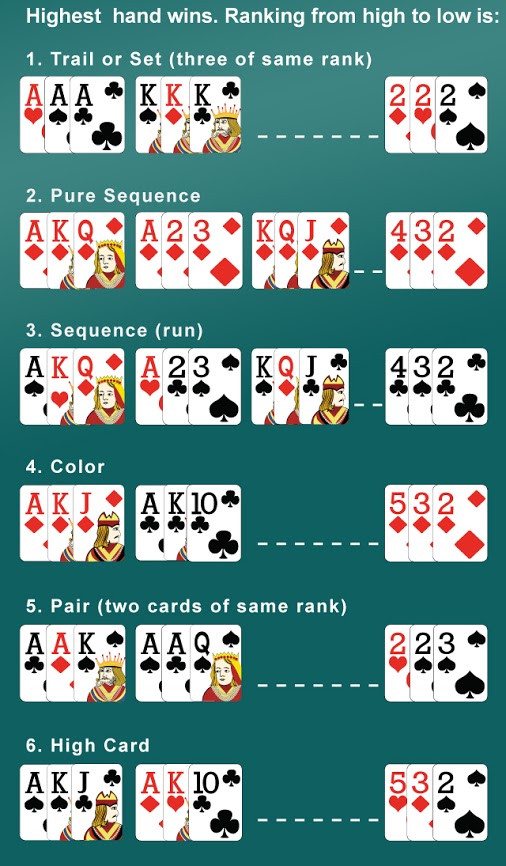
Playing Teen Patti. Each player contributes the boot money and gets three cards facedown. Now it is the turn of the player next to the dealer in clockwise direction. The player has option to place a bet without seeing the cards (blind) or see the card. When the player sees his card, he/she can play chaal or may have other options depending upon the progress of the game. A player who places a blind bet is referred to as the blind player. A player who places his bet after seeing the cards is referred to as the seen player.
Blind Player. To be blind player, you must not see your cards. You have options to play Pack, Blind and Show if available. To play Blind put the bet amount in the pot. The Blind bet amount is equal to the current stake amount or twice the current stake amount. The current stake amount, in case of the first player, is the boot amount. Thus if the first player is a blind player, the player must bet amount equal to the boot amount or twice the boot amount.
Stake Amount. The bet placed by a blind player becomes the stake amount for the next player while half of the bet placed by a seen player becomes the stake amount for the next player. In case of the next blind players, the bet amount can be equal to the stake amount or twice the stake amount.
A blind player can ask for a Show only when there is one opponent remaining in the game. This is a blind show. After asking for show, the cards of both the players become visible and the winner gets the pot.
Seen Player. A seen player can play Chaal, Pack or may have other options. The other options that may be available to the seen player are Show and Side Show. Once you have seen your cards, to remain in the game, you must play chaal unless you select any other available option.
(a) Chaal. To remain in the game, a seen player must play Chaal or Side Show if available. For chaal the player must put the bet amount in the bot. The bet amount for a seen player is equal to twice or four times the current stake amount. If the previous player is a blind player, the stake amount for next player is amount bet by the player. If the previous player is a seen player, the stake amount for next player is half the amount bet by the player.
(b) Side Show. A seen player can ask for a Side Show. Side Show means that you wish to compare your cards with the cards of the previous player. You can do this only if the previous player is also a seen player and there are one or more other players still in the game. For Side Show you put amount equal to twice the current stake in the pot. Your request for the Side Show is conveyed to the previous player. The previous player has option to accept or deny your Side Show request.
If your Side Show request is accepted and the previous player has better cards than you, you must pack. If your cards are better than the previous player, the previous player must pack. After one of you have packed, the turn passes on to the next player.
If your Side Show request is denied, you do not see each other’s cards and both of you remain in the game and the turn passes on to the next player.
Limited Stake and Unlimited Stake Tables. When you play Teen Patti for the first time, you play on a limited stake table. On the first limited stake table that you play, the boot amount is 2, you can play maximum 4 blinds, the maximum Chaal that you can play is 256 and the Pot limit is 2048. When the Pot limit is reached, all players still in the game are forced to show their cards and the winner gets the Pot.
In the next level limited table, the the boot amount is 4, you can play maximum 4 blinds, the maximum Chaal that you can play is 512 and the Pot limit is 4096. Players who have played many hands and have many chips play on higher level tables.
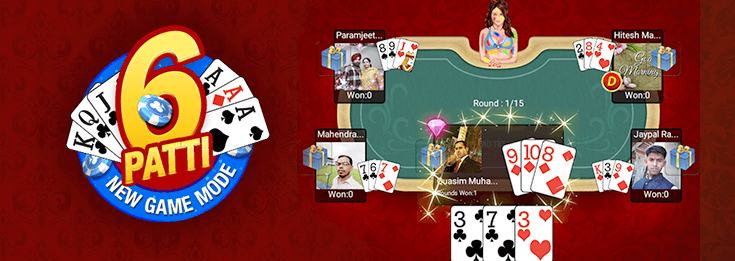
6 Patti
- This is a high-stakes knock-out tournament where you can win 5 times of your buy-in amount.
- In 6 Patti each player will be given its own deck of 45 cards. 7 cards of same rank and suit is eliminated randomly from every deck.
- You can see the eliminated cards in the info section of the game after starting of the game.
- In the starting round, 6 cards each will be distributed to the players from their respective deck. Select best 3 suitable cards out of 6, to play your chaal.
- Player with the highest hand wins (Ranking is same as in Teen Patti Classic)
- After every round, 3 new random cards will be distributed from your respective set. These 3 along with 3 remaining cards will be your 6 cards for that round.
- Win Score will be updated for every round. Winners will be rewarded accordingly.
Instructions to play
- Click on “Tourney” Button
- Set Buy-in
Set the Buy-in value using slider. Then Click on “Join Tournament” button. - Once all the players have joined, game will start.
- Each player will get 6 cards
- Choose 3 out of 6 cards to play your best suitable* chaal.
- Tap on the cards that you want to select.
- Then click “GO” button to proceed.
- You will get 10 seconds to complete your chaal.
- After your chaal the selected 3 cards will be played on the table.
Note: You can also view selected cards of other players after their respective chaal. - Player with the higher hand wins. (Ranking of hands is the same as in the classic Teen Patti game, refer details at the end of the documentation) Winner will be declared after all the players have completed their chaal.
- Then next round will start within 5 second.
3 new random cards will be distributed from your respective set. These 3 along with 3 remaining cards will be your 6 cards for this round. Repeat above steps to play your chaal. - Ranking of the players will be declared at the end of the tournament after all the (15 or 16) rounds are completed. Ranks will be given based on the number of rounds won by a player.
- Trail - three cards of the same rank.
Three aces are the best trail and three twos are the lowest. - Straight run - three consecutive cards of the same suit.
A-2-3, which is the highest straight run. Next comes A-K-Q, K-Q-J and so on down to 4-3-2, which is the lowest. - Normal run - three consecutive cards, not all of the same suit.
A-2-3 is the best normal run, then A-K-Q, K-Q-J and so on down to 4-3-2. - Color - any three cards of the same suit.
When comparing two colors, compare the highest card; if these are equal compare the second; if these are equal too, compare the lowest. Thus the highest color is A-K-J and the lowest is 5-3-2. - Pair - two cards of the same rank.
Between two such hands, compare the pair first, then the odd card if these are equal. The highest pair hand is therefore A-A-K and the lowest is 2-2-3. - High card - three cards that do not belong to any of the above types.
Compare the highest card first, then the second highest, then the lowest. The best hand of this type is A-K-J of mixed suits, and the worst is 5-3-2.
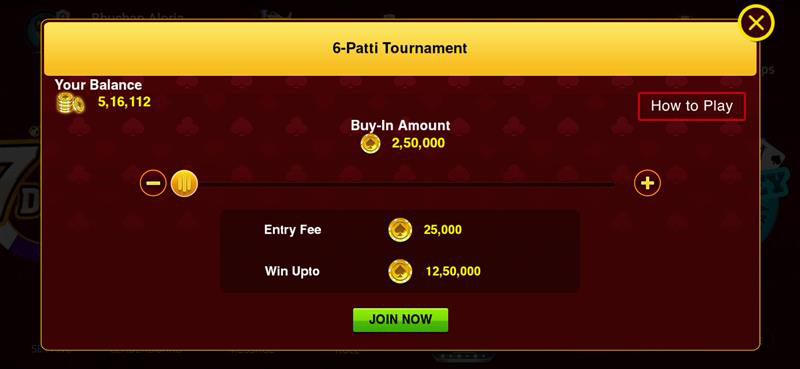
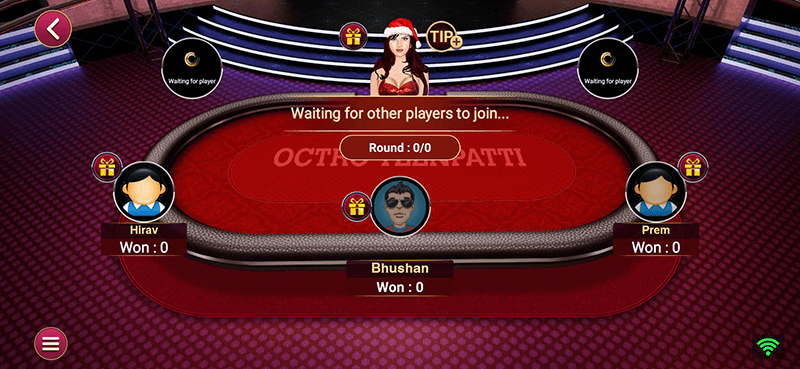
IN GAME PLAY
Note: Each player will be assigned with their own deck of cards and cards will be randomly distributed from the same.

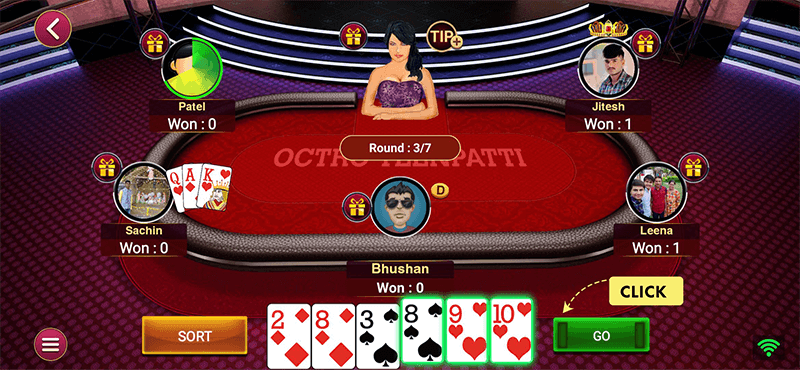
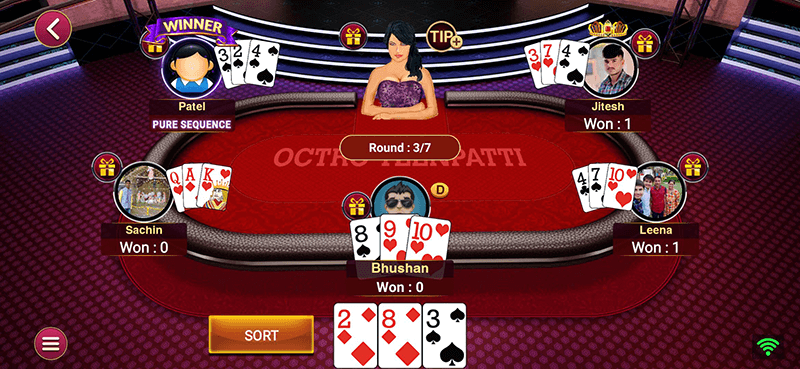
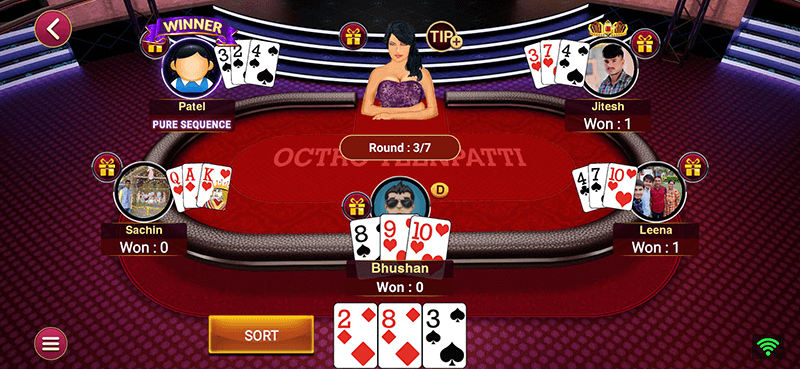
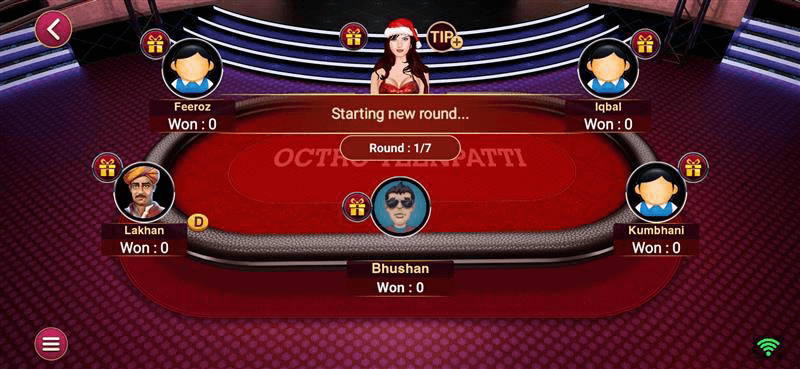
Note: If number of players are 3 or 5 then there will be 15 rounds. If number of players are 2 or 4 then there will be 16 rounds.**
Note: In case of 2 or 3 or 4 players, winner takes it all. In case of 5 players, the pot value is divided into 2x: 1.5x: 1x among 1st, 2nd and 3rd rank respectively.
* If it’s not your first chance then you can play smartly. You can decide your cards by looking at other players’ cards. If your best cards can’t make you win that round, then better save it for next round and give away the worst ones. Hence, the best suitable chaal.
**In case of players 3 or 5, deck of 45 cards will be assigned to each player in which randomly 7 cards will be removed. But those randomly removed 7 cards will be same from every deck. Similarly, in case of 4 players, deck of 48 cards will be assigned where randomly 4 cards will be removed. But those randomly removed 4 cards will be same from every deck.
Ranking of hands (From high to low)
Any hand of a higher type beats any hand of a lower type
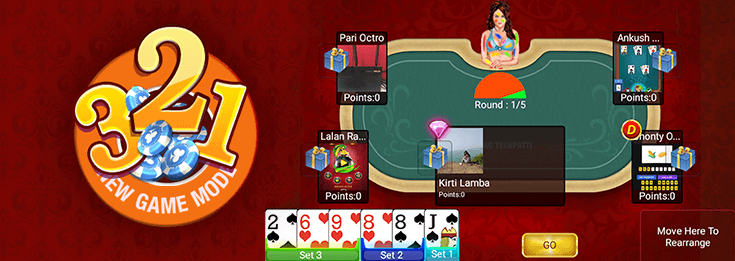
3-2-1 Tournament Mode
Game Prep
One deck used per round. 6 cards are dealt to each player on the table.
Game Play
- Select table level and click on "JOIN NOW" to enter the tournament.
- 3 empty sets placed on bottom left side.
- 6 cards displayed on bottom right side.
- Place the best possible cards in the sets of 3,2,1 respectively.
- Cards can be placed using any of the following 2 methods:-
- One card at a time: Drag any one card to a particular set.
- Multiple cards together: Click and select multiple cards and then click on the set where you want to drop the card/s.

- After placing all the 6 cards in 3 sets, press “GO” button.
- Then, there will be a consecutive show down on the table for all the 3 sets.
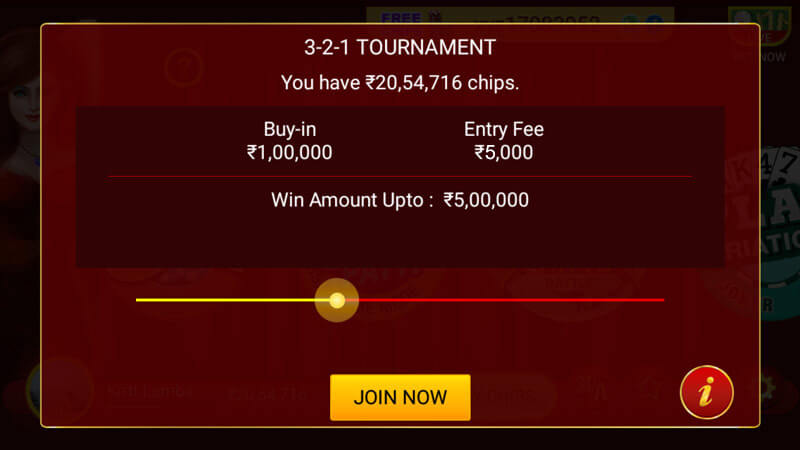



Scoring
- Winning of a set will be decided based on Teenpatti ranking of hands.
- Player will get 60 points on winning a hand. So, in a single round 3 hands will be played.
- Maximum 180 points can be scored in one round.
- There will be total 5 rounds in the tournament with max score 900 for a single player.
- In case of tie, points will be divided equally amongst the players.
- Click on "PLAY AGAIN" to enter the same level tournament.

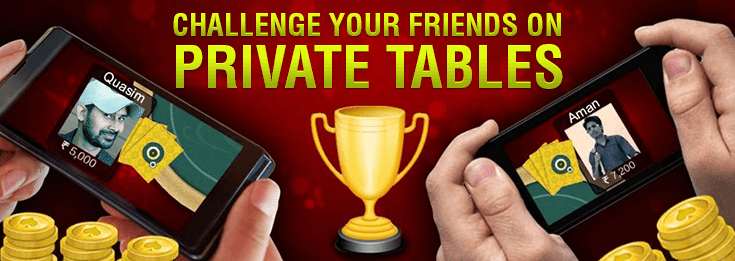
Private Table
Play Teen Patti with your friends. Invite your friends on private table using Facebook or WhatsApp & enjoy playing teen Patti anytime, anywhere.
How to Invite?
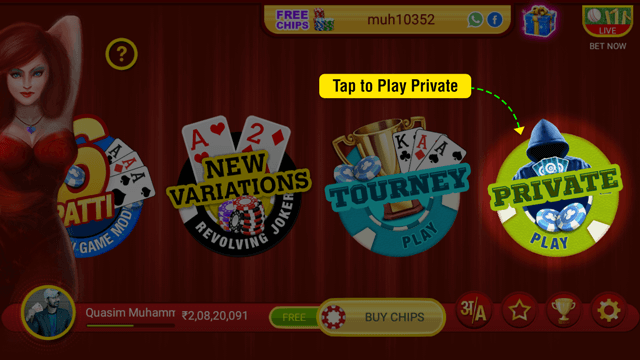
Click on Private button to play.
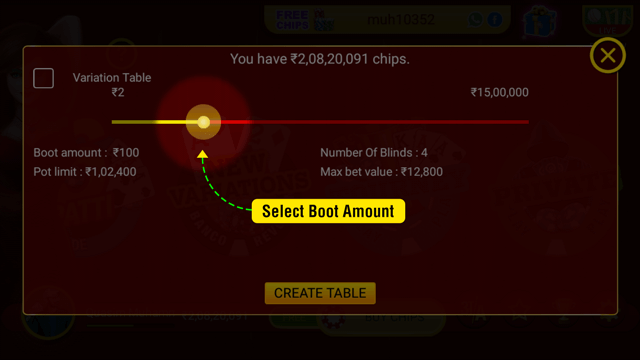
Select the boot on the table
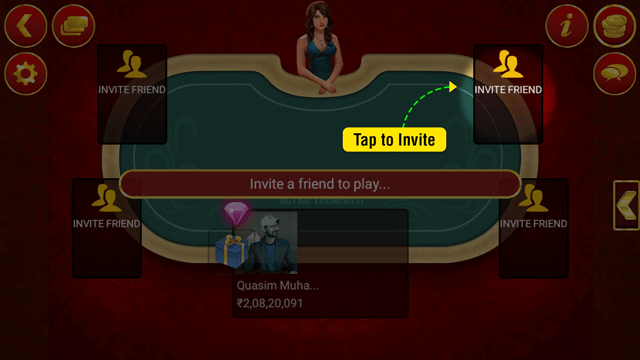
Tap to invite your Facebook friends (If not connected, connect with facebook)
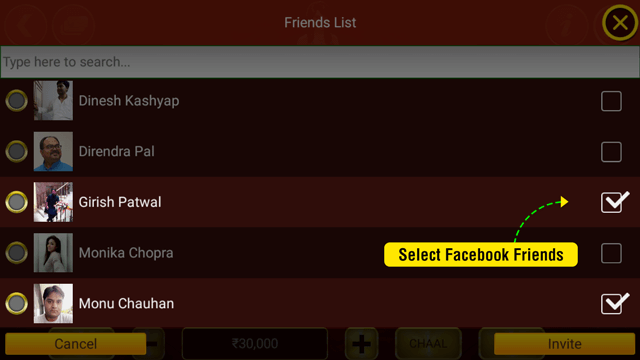
Select the friends from the friend list.
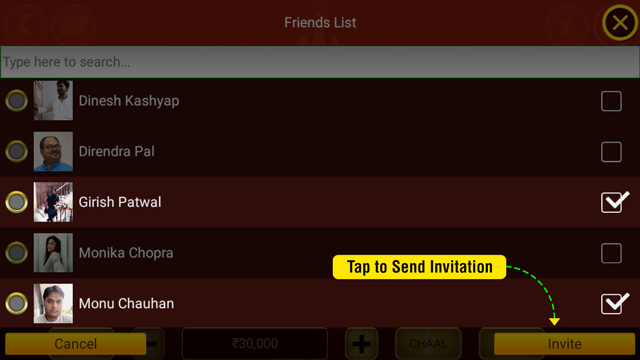
Tap “Invite” to send request, your Friends will receive the request in the app and notification.


